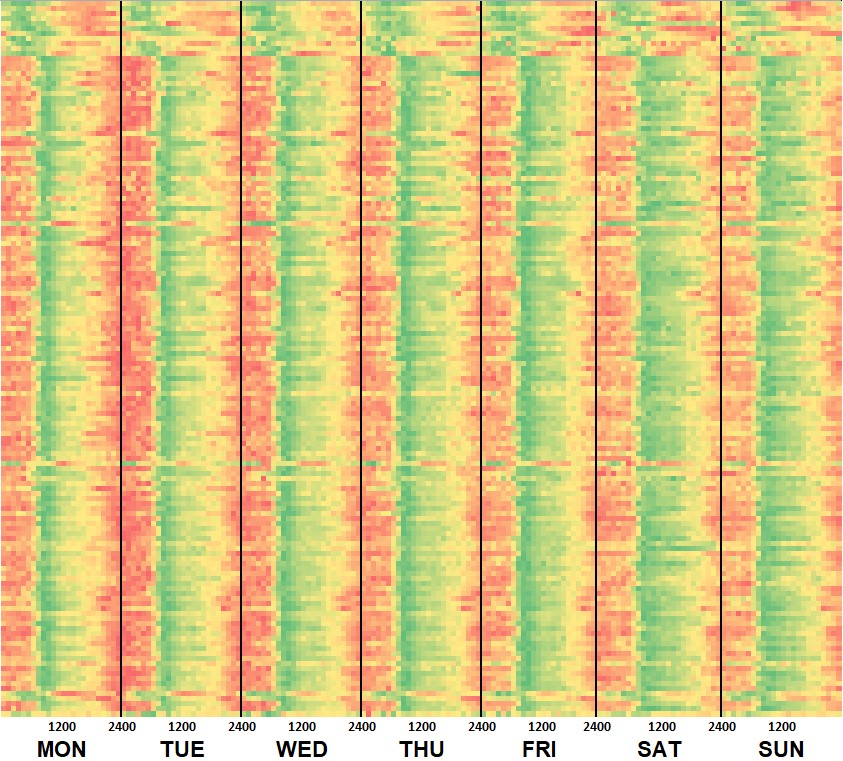Would you like to know what times of the week have the shortest or longest waits in your local A&E department?
I’ve obtained a spreadsheet from NHS Digital (via a freedom of information request) which reveals just that.
The spreadsheet gives data separately for each provider of urgent and emergency care in England for 2021/22. For patient arrivals in each hour of the week, it shows the average duration of attendance there until discharge or admission – ie, until leaving the hospital or being admitted as an inpatient.
The overall A&E pattern is very much that there are longer waits in the late evening and overnight, shorter waits in the morning, with the afternoons/early evenings in the middle.

In this chart each row going across is a different provider of emergency/urgent care in England (I have excluded those with only partial data or which are not 24-hour services), and each column is an hour of the week, going from 0000-0059 on Monday to 2300-2359 on Sunday. The red cells show longer average waiting times, the green cells shorter waits, and the yellow ones intermediate times.
It makes clear that for almost all providers, patients who arrive just before midnight or in the hours afterwards experience the longest waits on average, while those who arrive in the morning have the shortest waits.
This pattern is the same on every day of the week, including weekends. The very longest waits of all tend to be overnight from Monday to Tuesday.
The exceptions to this are mainly urgent treatment centres rather than A&E departments – their busiest times are often late afternoon or early evening. They appear congregated towards the top of this chart due to the ordering of the NHS provider code system.
Some providers show much greater variation in waiting times across different points of the week than others do.
Overall national statistics about busy times of the day in A&E are published routinely, but as far as I am aware this dataset broken down by different local providers and hour of the week has not been released before.
In a period when there is increasing concern over waiting times for emergency and urgent care, it is important and valuable localised information.